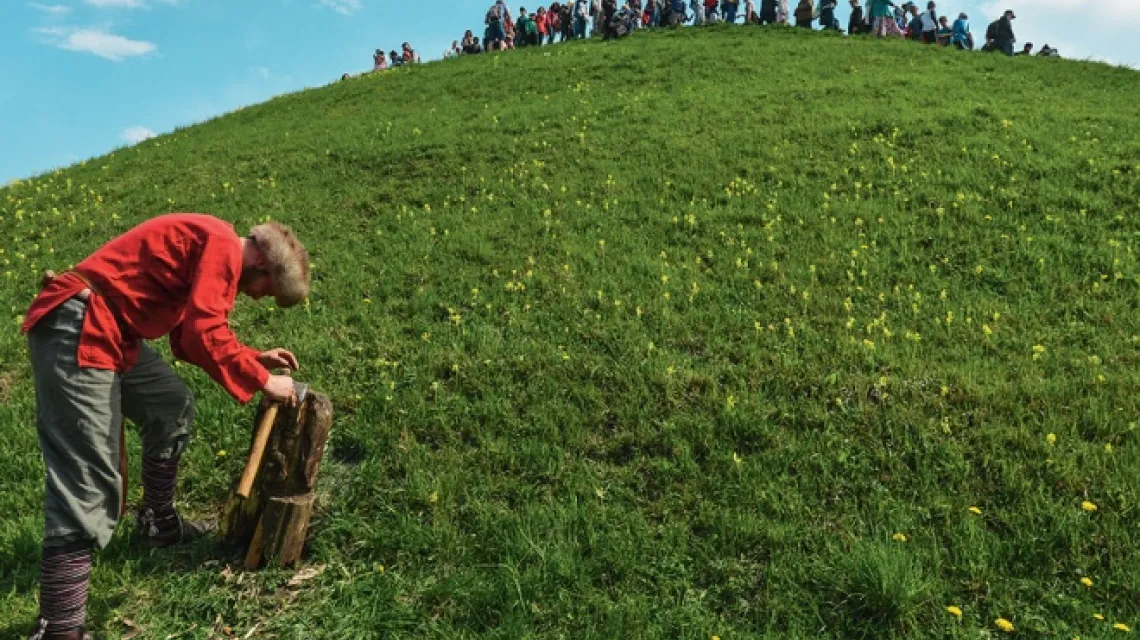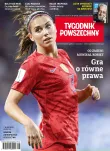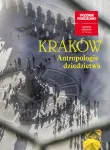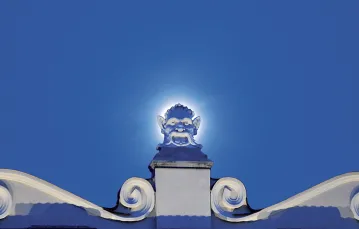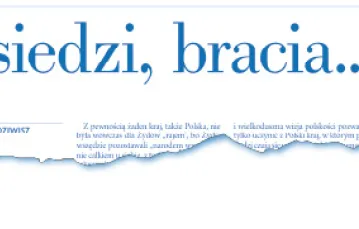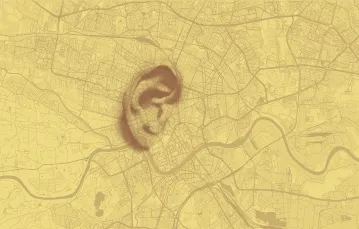Wykupienie dostępu pozwoli Ci czytać artykuły wysokiej jakości i wspierać niezależne dziennikarstwo w wymagających dla wydawców czasach. Rośnij z nami! Pełna oferta →
If you asked an ethnologist what customs are associated with Krakow, the answer would probably be: “the Emaus Fair and the Rękawka and Lajkonik Festivals”. This triad has occupied ethnographers since the 19th century, but today terms such as “tradition” or “custom”, which were once used in connection with such events, are often shunned by researchers. More precise tools are needed to describe culture. This is why – in ethnological literature, but in social practice as well – old traditions are being transformed into contemporary heritage. And the Rękawka Festival is the best example of this phenomenon.
Paupers Tumble
The festival is held on the first Tuesday after Easter. Currently, it takes place on two adjacent hills: the Krakus Mound and Lasota Hill. The Rękawka made a strong impression on 19th-century scholars who searched for its roots in pre-Christian times. They argued that some elements of the event, such as rolling coins down the hillside and the games and competitions involving feats of agility, were remnants of pagan rituals.
“The Krzemionki hills are thronging with people today: some are attracted by the chapel of St Benedict which stands there, others by the burial mound, which rises even higher. And everyone is amused by the silly game that is played, which consists in throwing eggs, buns, nuts, gingerbread, and other delicacies down the hill; the paupers climbing the steep slope fight over this booty and, in the heat of battle, stumble and tumble down”, wrote the historian Zygmunt Gloger in his book, Rok polski w życiu, tradycji, pieśni (The Polish Year in Life, Tradition and Song). These practices, once described by ethnographers as prehistoric and pagan, now form the foundation upon which the organisers of the Rękawka Festival base their vision of Kraków’s heritage.
However, written sources in which the festival is referenced reach back only as far as the 16th century. A mention of it can be found in Stanisław Sarnicki’s Księgi hetmańskie (Hetman Books). On the other hand, it is often said that the Rękawka had its beginnings in pre-Christian times, which would make it one of the oldest festivities celebrated in Kraków.
The festival’s setting – the Krakus Mound and Lasota Hill – also influences the perception of this tradition as extraordinarily durable. Today, these are two separate hills divided by a road, but they once used to be connected, forming a common stage for the entire celebration. Those who interpreted the Rękawka Festival in the context of pre-Christian customs were strongly influenced by the presence of the Krakus Mound – a place of pagan worship and most probably also an early medieval burial site (although the archaeological studies conducted so far have not established when it was created and whether it is a tumulus or not). Nevertheless, 19th-century scholars believed that the Rękawka included rituals related to pre-Christian spring customs – honouring the dead and offering sacrifices to one’s ancestors. The very term “Rękawka”, which was the original name of the mound itself and is derived from the Slavic root “raka” (tomb), is also supposed to indicate a link between the mound and funeral rites.
It is difficult to trace when pagan elements were fused with the religious celebrations held at the Church of St Benedict on Lasota Hill. There is a hypothesis that the church was built on the Krzemionki hills precisely to provide a counterbalance to the pagan ceremonies, but the historical sources at our disposal today mention religious rituals which were already Christian but supplemented by games in which 19th-century scholars saw traces of paganism. The festival’s relatively mysterious past as well as the belief that the Rękawka is a thoroughly local tradition, born in this place and bound to it, have become the basis for regarding the festival to be part of Kraków’s heritage.
Rękawka Reloaded
Today, certain historical places or events are often given a “certificate” of heritage. Presenting them as local, national or even global heritage can help event organisers obtain funding, preserve a monument, attract tourists or simply gain recognition.
However, the heritage label also entails certain constraints: financing institutions have their requirements, so sometimes the narrative about the past has to be simplified. In some cases, event organisers or hosts are willing to pay this price. Others develop their heritage brands from the bottom up, preferring not to go in at the deep end, for instance by applying to be included on UNESCO’s list of representative intangible cultural heritage, but rather to cultivate their heritage in practice by organising an event which the participants perceive as part of local tradition.
This is exactly what happened with the Rękawka festival. In 1897, the Austrian authorities banned it, and it only returned after Poland had regained independence; at that time it was a parish fair combined with games, held at the Church of St Benedict. However, it had lost its splendour and momentum and continued as a modest religious celebration. That was the situation until the end of the 20th century.
Everything changed in 2001 when the Podgórze Cultural Centre, in collaboration with the “Krak” Vistula Warriors Squad, held the first Traditional Rękawka Festival on the Krakus Mound. The intention was to re-enact the original pagan event. However, the basic character of the festival changed – it was no longer the visitors, but rather the reenactors, who took part in the games and rolled food down the slopes of the Krakus Mound. Rękawka became a historical re-enactment of early medieval Slavic customs, and to some extent also a re-enactment of the old Kraków festival in accordance with its 19th-century descriptions.
During the Traditional Rękawka Festival, reenactors of the Slavic early Middle Ages demonstrate ancient religious customs and rituals. The script changes every year and a different theme is featured each time: it could be the pantheon of the Slavic gods, divination or the Slavic spirit world. There are also some recurring elements such as rolling food down the slopes of the mound, combining the Rękawka Festival with rituals meant to honour the dead, and holding games and competitions involving feats of agility. The reenactors roll sacrificial gifts down the slopes, celebrate the arrival of spring, and light a fire at the top of the mound. Old descriptions of the competitions once held there have inspired a race in which warriors in full armour take part, with no holds barred. The link between the Krakus Mound and between the festival itself and funeral rites is emphasised by the staging of a funeral at the end of the event.
Another regular feature of the Rękawka is divination, when a priest predicts the fortunes of Krakus’s city, i.e. Kraków, in the coming year. Typically for such reenactments, a battle is also waged between the warriors. Each Tuesday after Easter, the space at the foot of the Krakus Mound is transformed into an early medieval camp. Reenactors from different parts of Poland pitch their tents, set up their stalls, cook food, and give demonstrations of various crafts.
Two Religions
References to pagan religion are an important part of the Rękawka Festival. During the festivities, it is present mainly as an element of the ancient reality being re-enacted. At the foot of the mound stands a reconstructed temple. The rituals that take place – lighting a fire, predicting the fortunes of Krakus’s city, burial – are connected with the beliefs of the ancient Slavs. This does not mean, however, that the entire event is a kind of pagan ritual. While the firelighting ceremony at the top of the mound is sometimes conducted by an actual pagan priest, and some participants of the Rękawka Festival are pagans as well, only a handful of people celebrate it as a religious holiday. Most see it as an event that recreates old customs and harks back to the pre-Christian traditions which have also affected the development of local culture and as such should be presented in the public space.
For its inventors, the main purpose of the festival is to present the culture and religion of the early medieval Slavs. However, its reception is highly individual. Some notice the religious element of the Rękawka (even if they do not treat it as an actual ritual), because today’s pagans like to stress the continuity between their faith and the ancient religion of the Slavs. Others only see an attempt to re-enact the old culture and its religion; finally, for some people, the Rękawka presents a certain vision of the epoch of the legendary Prince Krakus.
As far as the organisers are concerned, it is primarily a reminder of Kraków’s pre-Christian roots and pagan traditions. They believe that these are part of the city’s heritage and reflect its beginnings and culture, which was later displaced by Christianity and subsequently forgotten. Today, the Traditional Rękawka Festival is the dominant component of the festivities and has to some extent overshadowed the much older celebrations held near the Church of St Benedict.
In fact, the events that take place on Lasota Hill are treated as part of the Rękawka by their participants. Each Tuesday after Easter, the church holds a fair and at midday High Mass is celebrated. However, most people do not come to Lasota Hill primarily for the mass. Instead, they visit the stalls in front of the church and buy souvenirs. The stalls offer mostly cheap plastic toys, balloons, devotional items, candyfloss and other sweets as well as popcorn. Nearby is a carousel, a bouncy castle, and some trampolines. A visit to the Church of St Benedict is often part of a post-Easter family walk and sometimes serves as a stop on the way to the Krakus Mound. The religious, Catholic aspect of the holiday is not important for everyone.
Visitors to Lasota Hill and to the Krakus Mound describe both events as the “Rękawka” and first visit one and then the other, because for them both are fused into a single occasion and are connected with the historical celebrations which once took place on the two hills. Moreover, the organisers of both events use the name “Rękawka”, so we have the Traditional Rękawka Festival and the Rękawka Fair. In both cases, references to the past are important: the local Kraków tradition is invoked, which draws people not only because of its attractions, but also because it is deeply rooted in this place.
Heritage as a Label of Quality
The Traditional Rękawka Festival is an example of how local heritage is shaped by practice. While the festivities that take place at the foot of the Krakus Mound are relatively recent, their presence in the public space is guaranteed by their status as local tradition. By showcasing pagan heritage and re-enacting ancient customs, they have helped to expand our vision of the origins of Kraków beyond the beginnings of Christianity. Religion becomes the axis around which Kraków’s heritage is constructed, and the two parts of the festivities, held on the Krakus Mound and on Lasota Hill, offer competing pagan and Christian versions of the city’s early history. In a sense, too, they showcase two versions of Kraków’s identity – one harking back to pagan times and the other emphasising the Christian view of its history.
Owing to this grassroots initiative, references to the pagan legacy are regularly present in city’s space. The Rękawka is considered to be part of Kraków’s heritage, and this informal “label of quality” allows paganism, which is clearly a minority religion, to become part of the city’s landscape, history, and culture alongside Roman Catholicism. Through the reconstruction and re-enactment of ancient Slavic customs, this aspect of the city’s past becomes noticeable and connected to its local heritage. ©
DR HAB. KAMILA BARANIECKA-OLSZEWSKA is a professor of the Polish Academy of Sciences and works at the Institute of Archaeology and Ethnology of the Polish Academy of Sciences. Her research interests focus on performance studies. She has authored books on Passion plays and on historical reenactments in Poland. She is a member of the HERILIGION consortium.
KRAKÓW. ANTROPOLOGIE DZIEDZICTWA – CZYTAJ CAŁY DODATEK SPECJALNY >>>
KRAKOW. ANTHROPOLOGIES OF HERITAGE – READ MORE IN ENGLISH >>>

